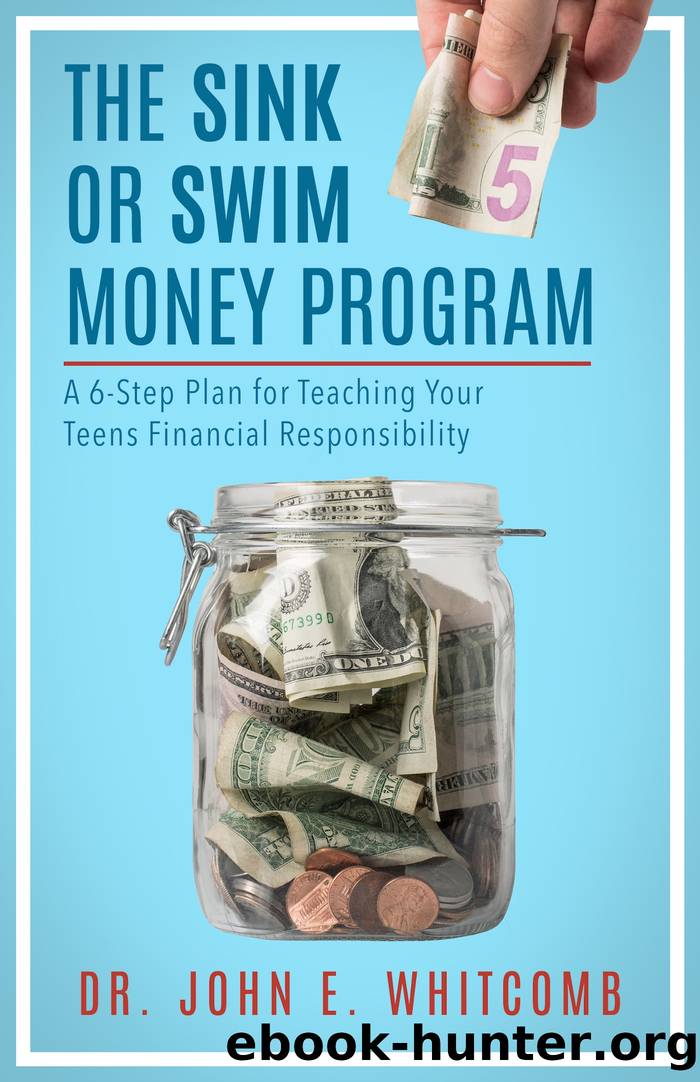The Sink or Swim Money Program by John E. Whitcomb

Author:John E. Whitcomb
Language: eng
Format: epub
ISBN: 9781682307571
Publisher: Diversion Books
Published: 2016-05-07T00:00:00+00:00
CHAPTER FOURTEEN
Charity, Savings, IRAs, and College
Learning to save or to give charitably is something the perfect child should naturally know how to do. Unfortunately, the reality is that learning these behaviors takes time and develops only through practice, just like any other learned behavior. If we parents had started out as perfect children, we would be saving a lot more than we are now. Clearly, we havenât learned it well ourselves.
In the public arena in which our children function, many types of savings behaviors can be seen. If we look closely, we see that these are groups saving for specified group goals rather than individuals saving for a personal goal.
Selling chocolate-covered cherries after long church services to hypoglycemic churchgoers is one of my favorites. Who can resist chocolate from irrepressibly cheerful teens at church? And all for the good cause of funding a church trip, to boot. Car washes to raise money for school bands, Girl Scout cookies, youth group Christmas wreaths, endless pizza salesâall are methods of saving for group goals. These are efforts we see publicly. We need to look internally for what we are saving for ourselves and how we teach our kids to save for themselves.
Like the other main theme in this bookâlearning prudent spending habitsâdeveloping habits of saving and giving requires opportunities for learning and rewards for doing. You have to encourage savings, watch them grow, and talk about your long-term goals. Saving behavior wonât start out of the blue at age thirteen, just as it doesnât start at age twenty-three. Musicians do not spring forth as maestros without having practiced. What is the savings equivalent of violin lessons?
I like fostering the saving habit from an early age. Whenever you begin to give your kids pocket money, I believe a certain amount should go into an envelope for savings and a certain amount for charity. If one doesnât walk the walk at age six, it is much harder to start at age twelve. When the child is six years old, parents have to be completely in charge. You put the money in the envelopes, and you keep the envelopes in your possession. Take the envelopes out each week, hand the pocket money out to eager little fingers, and visibly place the designated portion into the savings and charitable-giving envelope.
Just as you reward the giving of pocket money by creating circumstances in which your young child can spend it, create rewarding circumstances for saving and giving. Accumulating the savings for a big purchase makes the act of saving feel good. Encouragement, praise, and positive feedback from other adults make charitable giving feel good to your child.
One family reported encouraging saving habits by contributing a matching amount for any money their child saved from ages six through twelve. Their argument was that a 6 percent return on a savings account in the bank is not enough to reward children who have a reference time line of a week.
One caution: An offer to double any money saved has a giant loophole in it.
Download
This site does not store any files on its server. We only index and link to content provided by other sites. Please contact the content providers to delete copyright contents if any and email us, we'll remove relevant links or contents immediately.
Zero to IPO: Over $1 Trillion of Actionable Advice from the World's Most Successful Entrepreneurs by Frederic Kerrest(4240)
Machine Learning at Scale with H2O by Gregory Keys | David Whiting(4121)
Never by Ken Follett(3767)
Harry Potter and the Goblet Of Fire by J.K. Rowling(3759)
Ogilvy on Advertising by David Ogilvy(3485)
Shadow of Night by Deborah Harkness(3279)
The Man Who Died Twice by Richard Osman(2982)
Book of Life by Deborah Harkness(2855)
0041152001443424520 .pdf by Unknown(2772)
Will by Will Smith(2772)
My Brilliant Friend by Elena Ferrante(2761)
The Tipping Point by Malcolm Gladwell(2733)
How Proust Can Change Your Life by Alain De Botton(2727)
Purple Hibiscus by Chimamanda Ngozi Adichie(2627)
How to Pay Zero Taxes, 2018 by Jeff A. Schnepper(2578)
Hooked: A Dark, Contemporary Romance (Never After Series) by Emily McIntire(2484)
Rationality by Steven Pinker(2276)
Borders by unknow(2215)
Can't Hurt Me: Master Your Mind and Defy the Odds - Clean Edition by David Goggins(2166)
